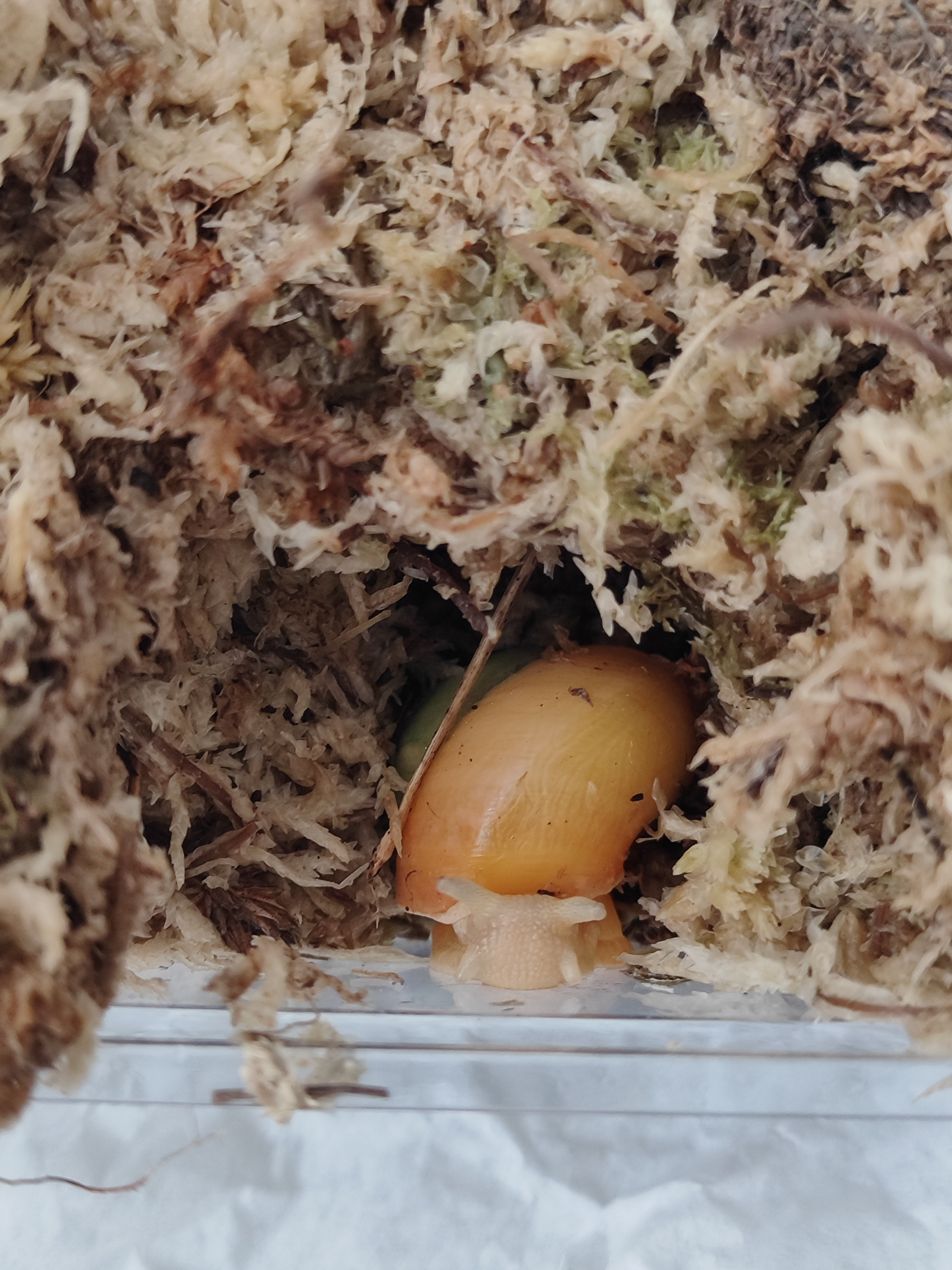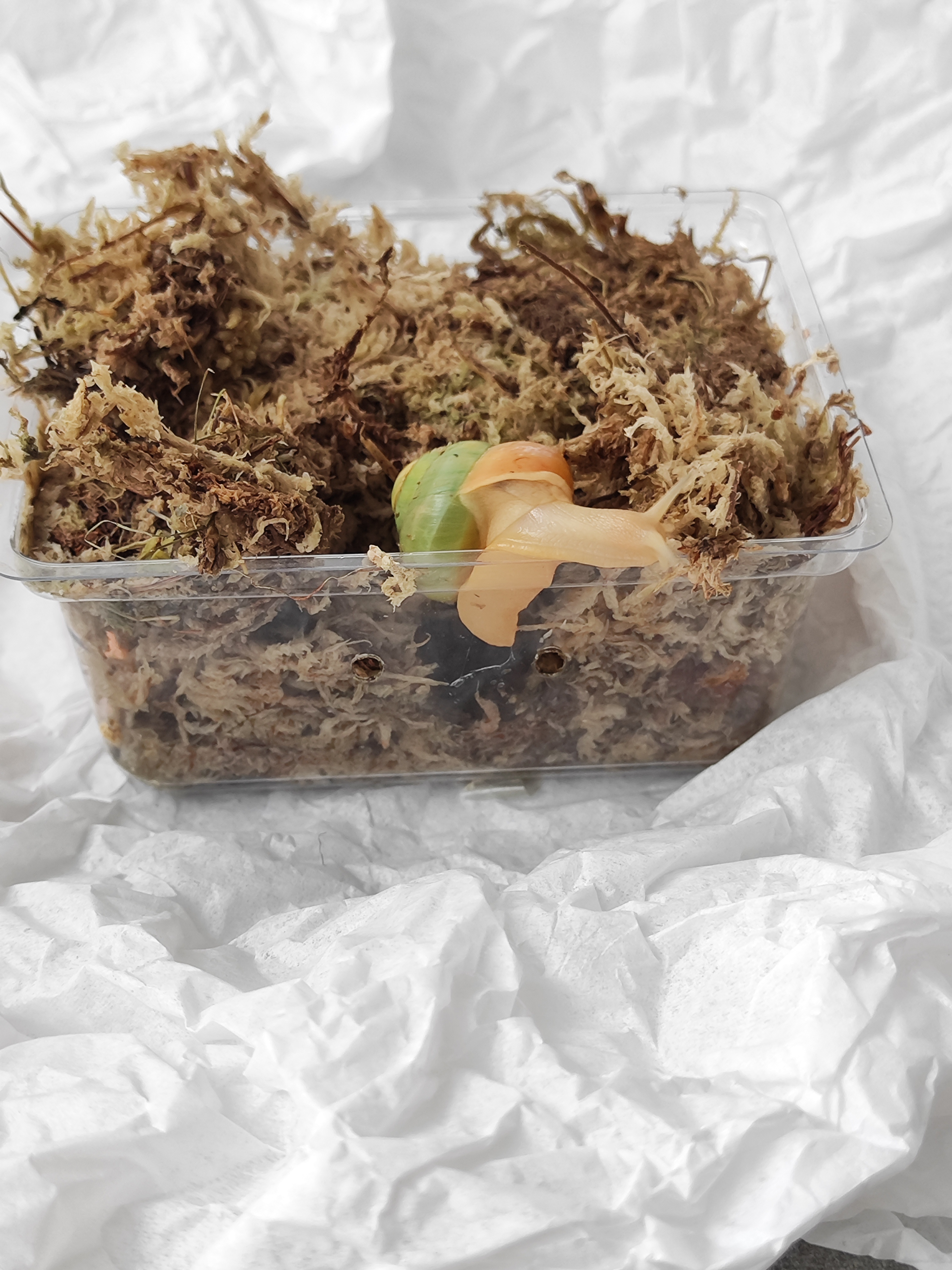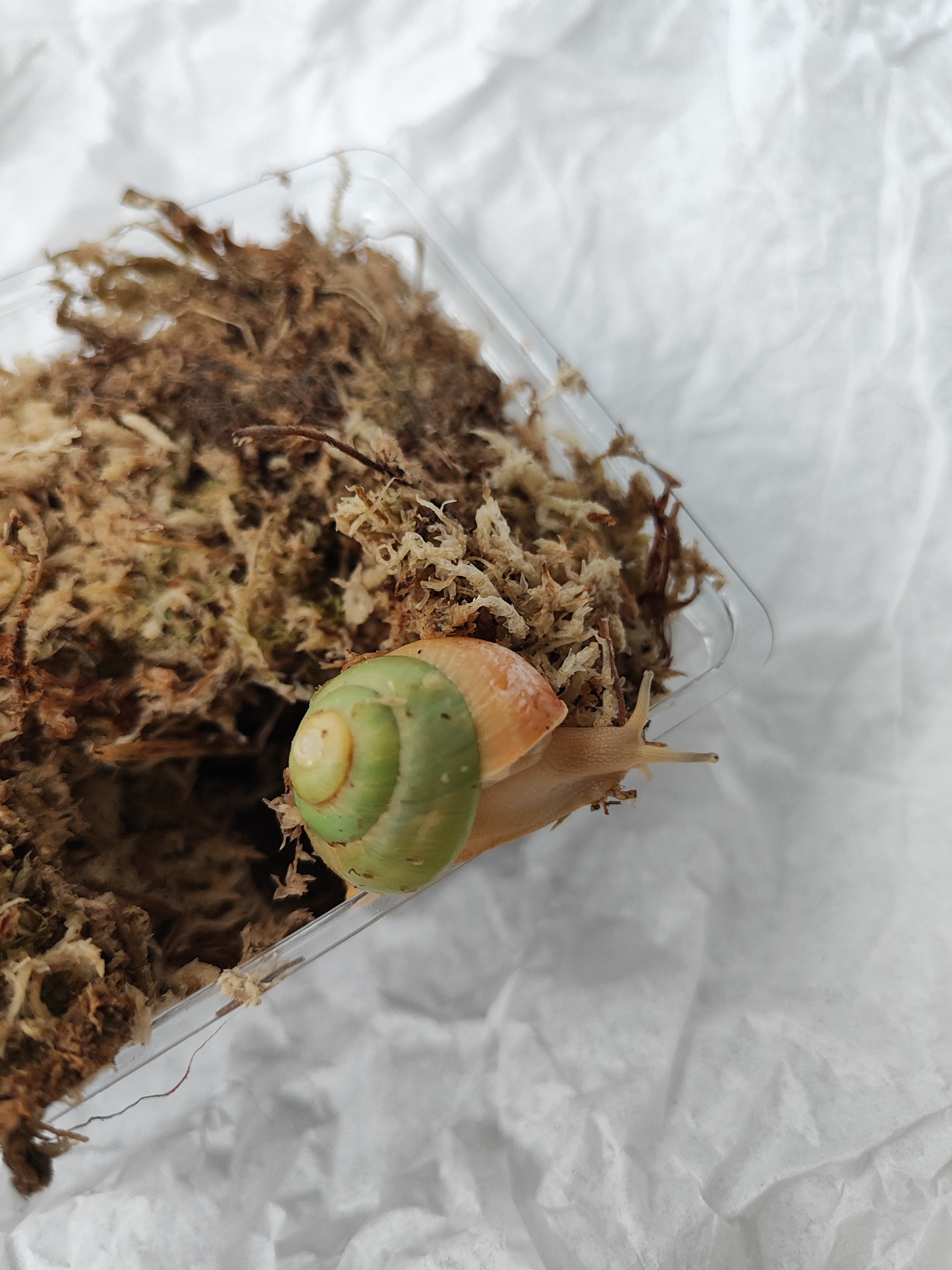We need your consent to the use of individual data so that you can show information about your interests, among other things. Click "OK" to give your consent.
Asperitas bimaensis Indonesia
Please read the detailed description below.
Detailed product description
Important info:
The snails are not measured with calipers, which would be the most accurate tool, in order to avoid accidental damage to the shell during measurement. We try to measure them as accurately as possible, but there may still be a slight deviation compared to caliper measurements.
Snails may have slight irregularities on the shell as they reacted to the change in humidity after I changed their substrate. The snails which I offer as with worse shell (imperfections) I consider a bit worse in aesthetic but growing well.
I am not able to guarantee the shell colors when the snails get bigger. The smaller offered babies are even sometimes hard to tell If they will be yellow or orange, also there might be transition to multiple colours as they grow which I cannot predict. Some orange might also turn more like a pink color.
I wanted to wait with shipping for time when heat pack will not be needed but I reconsidered it as these snails in wild have high temperatures so it will be better to ship with a heat pack anyway. I think the night temperatures in next few weeks which would be okay for Achatinas might be still too low for them, it is better not to risk it.
Asperitas bimaensis is a terrestrial species of snail. Since it often climbs vegetation, trees, branches, and damp rocks, it can be considered a partially arboreal species, although it is not strictly a tree-dwelling snail. In captivity, these snails typically stay on the lid of their enclosure, but due to feeding and egg-laying, they regularly descend to the ground.
Snails from the genus Asperitas were imported to the Czech Republic as early as 2008, and successful breeding was achieved at that time. However, it is not known whether they thrived in captivity long-term, and it is likely that the entire imported population eventually disappeared. The species Asperitas bimaensis appeared in Europe in 2024 when it was imported from Indonesia to Germany.
I acquired several adult individuals for breeding, initially brown and brown-striped Asperitas sp. These snails were active and readily accepted sweet potato as food (later, I also tried cucumber, which they ate as well). I kept them in a box, first on white peat and later on coconut substrate. The substrate was always fully covered with wet sphagnum moss. Surprisingly, they soon began mating and laid multiple clutches of eggs. Subsequently, some adults died, often shortly after laying eggs. I thought it might be due to exhaustion, but with more experience, I am no longer sure. It is possible the snails were internally infected with parasites, as when they were sitting on the lid of their enclosure, they had unusual white spots on their feet underneath, which did not seem to be caused by injury during import and did not change or improve over time (in the case of injury, the damaged area typically heals and regains pigmentation). Over time, I lost all the brown/brown-striped adults. The egg clutches did not hatch, except for two that were laid in September and October 2024. Hatching occurred about 30 days after laying, and only a small portion of the eggs hatched. The juveniles are now thriving in May 2025, though they grow more slowly than A. bimaensis (see below).
A month after acquiring the Asperitas sp., when several had already died, I decided to acquire more, this time Asperitas bimaensis with orange and green shells. This was likely another import, as these colorations were not available a month earlier, and the snails appeared to be in much better condition, without any white spots on their feet. I kept them under the same conditions—higher humidity, room temperature of 23°C at night and higher during the day. The terrarium was heated (the temperature near the terrarium was 26-27°C), while the snail boxes were not directly next to the terrarium, so the enclosure temperature was slightly lower (around 25°C).
The orange and green-colored Asperitas soon laid egg clutches (without observed mating, so they were likely already mated in the wild or at the importer). Mating was later observed, lasting at least a few hours. During courtship, a calcium love dart was also observed. All egg clutches from these Asperitas successfully hatched. Unfortunately, over time, I lost some of the orange-colored adults, and now, in May 2025, I have only two of the original five. All five of the green-colored individuals are still thriving.
When I find an egg clutch, I transfer it to a small box (https://www.shneczek.cz/en/eshop/boxes/box-with-divided-lid-1-3-liter/) on clean substrate. I covered the first clutches with a bit of substrate to keep the hatching conditions as similar as possible to how I found the eggs (covered with substrate). Later clutches were not always covered, and no hatching issues were observed. Occasionally, an egg clutch might not appear (if not buried all the way at the bottom of the enclosure). In such cases, the juveniles are transferred to a smaller box after hatching. Transferring the eggs from the parents is not strictly necessary. The incubation period is about a month, and in case of substrate contamination or over-saturation, the enclosure cannot be cleaned, and the eggs might drown.
For the first juveniles, I initially offered the same food as the parents—sweet potato. Unfortunately, it was not well accepted by the juveniles, and it seemed they weren’t eating at all. The suitable food for juveniles seems to be a combination of banana and spirulina, which they begin to eat shortly after hatching. Successful feeding can even be observed later, as the dark green color of the spirulina is visible through their translucent shells. The food mixture can be made by mashing a piece of banana and mixing it with spirulina and water. A pre-made mix of dried banana and spirulina (https://www.shneczek.cz/en/eshop/protein-sources/banana-with-spirulia/?variant=40305/1) can also be used, and I use this mix for all the juveniles. The advantage of this mix is that you can prepare only the required amount. Fresh banana always spoiled before I could use it all. If too much mixture is made, it can be stored in the fridge until the next day.
A bit of calcium carbonate can also be added to the mixture. I recommend adding it every other feeding (not every time). Juveniles are best fed this mixture every other day. They should also have access to cuttlefish bone from the start. As they grow a little larger, I also offer sweet potato, which they begin to accept over time. After that, it is not necessary to feed the mixture every two days. The banana and spirulina mixture is also loved by the adult snails. The mixture should be well mixed but not too runny, as it is best spread in a thin layer on the lid of the enclosure with a spoon.
I keep the juveniles in small boxes, which I change for larger ones depending on the size and number of juveniles. Currently, I use boxes ranging from 1.3 to 6 liters. For example, in the 6-liter box, I have 10 larger juveniles together. The boxes are oriented horizontally because the snails mainly use the lid surface. As a substrate, I use a thicker layer of coconut substrate, covered with a layer of sphagnum moss to maintain moisture. The boxes with the juveniles are placed right next to the terrarium, which is heated with a 25W bulb (near it, the temperature is up to 26-27°C). The juveniles are exposed to higher temperatures from 8 AM to 5 PM, and at night, the temperature drops to around 23°C. The higher daytime temperature helps release moisture into the air, which is ideal for the snails.
Regarding juvenile mortality, losses are minimal. It is important to offer the banana and spirulina mixture to freshly hatched juveniles as soon as possible and to keep the enclosure clean, especially by frequently washing the lid to remove remnants of food and feces. If the banana and spirulina mixture attracts flies, their larvae will appear in it. Fly larvae can be deadly to very small Asperitas juveniles. Unfortunately, this happened with one clutch, despite cleaning the lid—the larvae were in the substrate. However, this was my mistake, not an issue with the viability of the juveniles.
Snails of the genus Asperitas were long considered difficult to breed. This may partly be due to the inability to breed them in larger numbers, poor-quality imports (due to bad transport conditions), or the fact that they were considered difficult to breed when they died early due to parasitic infections. The age of the imported individuals, which is unknown, could also play a role, as it is not possible to determine if they were still young individuals given that their shell growth had already stopped.
I currently view the stabilization of Asperitas bimaensis in captivity positively. However, I would not claim prematurely that it is an entirely problem-free species, as my experience with breeding it is still relatively short. For long-term stability in captivity, it is crucial that more breeders become involved in breeding to create self-sustaining populations. I recommend this species to more experienced breeders—ideally those who have experience breeding at least some other species of terrestrial snails.


























 Sold out? Set a watchdog ↓ for availability notification.
Sold out? Set a watchdog ↓ for availability notification.




 Cookie - Settings
Cookie - Settings
